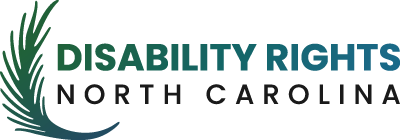TBI Program, Study, or Pilot
Type: Project
Agency Providing the Funding: Byrne Justice Assistance Grant (JAG) through the U.S. Department of Justice and the Pennsylvania Commission on Crime and Delinquency (PCCD).
Year Provided/Duration: Information Unavailable
Funding Given To: Pennsylvania Department of Corrections, Pennsylvania Board of Probation and Parole, the Brain Injury Association of Pennsylvania (BIAPA) Office of Vocational Rehabilitation
Population (Juvenile Justice, Criminal Justice, Parole, Probation, Jail, Prison, etc.,)
System Group
Adult Men
Location
Transitional Housing Unit (THU) at State Correctional Institution -Graterford
Purpose/Goal
The goals of this project were to provide brain injury education in the corrections system, to identify individuals with cognitive impairment due to brain injury, to set up individualized brain injury supports to maximize success upon reentry into the community, and to facilitate successful connections to community based brain injury resources upon release. (Keating, Nagele, Vaccaro, & Schmidt, 2019)
Screening Tool Used
What tool was used?
Traumatic Brain Injury Questionnaire
When is screening done?
These individuals were within 10 months of release or review by the parole board and had institutional support for release. Participation in the project was voluntary; and all of those identified for participation in the project provided informed consent. (Keating, Nagele, Vaccaro, & Schmidt, 2019)
What happens after screening?
Individuals who screened positive were given a neurocognitive assessment and then provided referrals to additional resources.
Who Conducted Screening?
Project Staff
Data Collection
Tracking
Information on the method of tracking unavailable.
Findings
More than 75% of those screened reported a possible history of brain injury, and 74% of those tested demonstrated evidence of neurocognitive impairment. Most injuries occurred prior to the age of 21 and incarceration. The average number of reported brain injuries per participant was 3.8. Impairments were most commonly in the areas of memory and executive functioning.
There was a total of 163 participants in the project. Five had known brain injury that was clearly documented and, therefore, did not require screening. Therefore 158 participants were screened for evidence of an event that could have resulted in brain injury using the TBIQ with supplemental questions. Of the total participants screened, 120, or 76%, reported an event or events that could have resulted in a brain injury. (Keating, Nagele, Vaccaro, & Schmidt, 2019)
Report findings were extensive and cannot be added as PDF’s to our site. Please submit a request at the link above and we will send the report(s) via email within 24-48 business hours.
Community Resources
Information and Referrals
A NeuroResource Facilitator began in this project when the individual was informed of the results of his screening and neurocognitive testing. It occurred through a series of meetings over the course of the individual’s remaining time in prison and continued into the community upon release.
The NeuroResource Facilitator focused on brain injury education, reentry planning, and resource application. The NeuroResource Facilitator and the individual identified goals, areas of concerns, and risks based on the individual’s strengths and weaknesses, and then crafted a plan to include resources, services, justice-related requirements, and natural supports to be implemented both before and after release.
Referrals were often made to medical assistance, Social Security (SSI or SSDI), physicians, health clinics, faith-based organizations, recovery organizations, volunteer work placements, and community resources for clothing, food and other essentials. Outcome data was collected on reentry plan elements.
(Keating, Nagele, Vaccaro, & Schmidt, 2019)
Trainings
Training occurred with group treatment leaders and other corrections personnel.
Education about brain injury and its effects for corrections personnel including medical providers, counselors, psychologists, employer/supervisors, officers. (Keating, Nagele, Vaccaro, & Schmidt, 2019)
Agency Contact Information
Name
Brain Injury Association of Pennsylvania
Website
Brain Injury Association of Pennsylvania
Phone Number
Sustainability
N/A
Advisory Board
Yes. Members included:
- Pennsylvania Department of Corrections,
- Pennsylvania Board of Probation and Parole,
- Pennsylvania Office of Vocational Rehabilitation,
- Lancaster County Re-Entry Coalition,
- Philadelphia Re-Entry Coalition,
- Montgomery County Justice Advisory Board, and the Acquired Brain
- Injury Network of Pennsylvania.
How was this information acquired?
Information acquired through the Pennsylvania Department of Health – Bureau of Family Health
References: For more information on this states work, please see references
Keating, D., Nagele, D., Vaccaro, M., & Schmidt, M. (2019). Brain injury in an offender population: Implications for reentry and community transition. Journal of Offender Rehabilitation, 57(8), 562-585. doi:10.1080/10509674.2018.1549178
